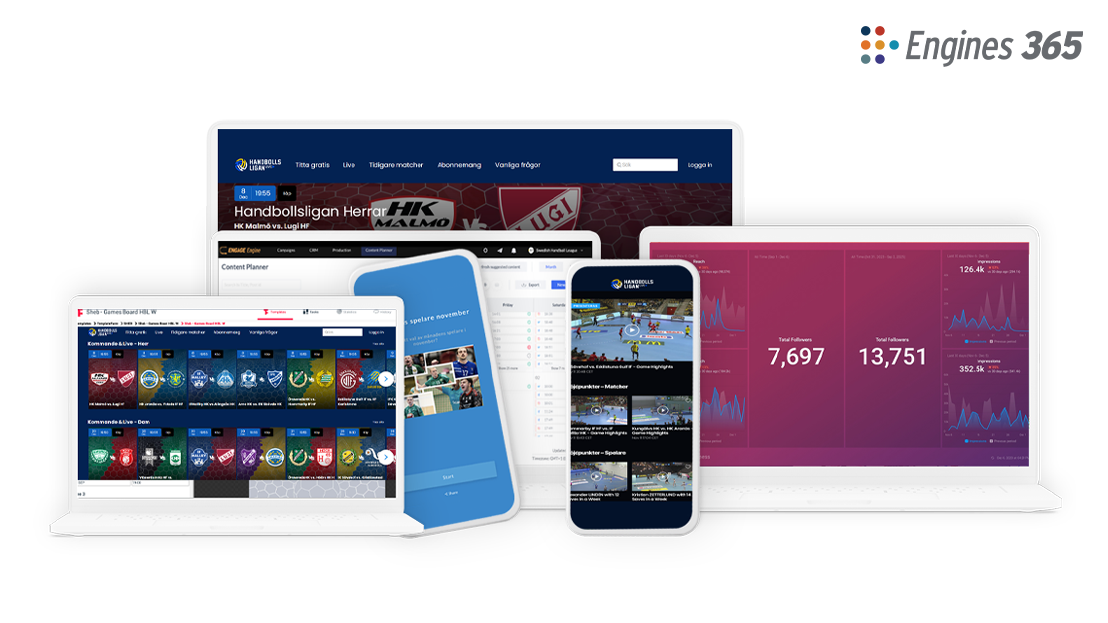In the realm of sports technology, the term 'sports content automation' often offers much promise and potential. It's touted as a game-changer, a revolutionary tool that can transform the way sports organisations handle content, freeing up time for content creators to work on more nuanced projects.
But as with any growing technology, there's a gap between expectation and reality that needs exploration. What are some of the tangible benefits of sports content automation and why might potential users be hesitant to use some of the tools available?
The allure of automation
At first glance, sports content automation seems like a silver bullet for many organisational challenges. The promise is immense: enhanced efficiency, significant time savings and a boost in workflow collaboration.
There is an almost utopian vision sports rightsholders have of a seamless, almost hands-free process where content juggles itself into place to free up creative minds for more strategic – and often more interesting – professional pursuits.
The reality of setup and customisation
However, like any significant technological undertaking, sports content automation doesn't just slot into place and run the show. There is an investment of time and effort upfront. Setting up and customising these systems to fit the unique needs of an organisation is a task that demands both resources and technical know-how.
It cannot be understated how critical this stage really is. It's the foundation upon which all the ensuing benefits are built. Not getting this section of setup right is the equivalent of investing in a sports car and only using it to go food shopping; you wouldn’t be benefitting from its full potential.
Expectation of analytics and insights
Organisations stepping into the world of sports content creation and automation often do so with the expectation of gaining deeper, more actionable insights. The idea is that with sophisticated analytics at their fingertips, decision-making becomes more data-driven, precise, and impactful.
The reality is that while these systems provide detailed analytics, the human element in interpreting these insights remains indispensable.
Translating data into actionable strategies is a skill that machines haven't mastered to a sophisticated level yet. This is where human expertise becomes crucial, bridging the gap between raw data and strategic implementation.
Scalability: A double-edged sword
Scalability is another major draw of sports content automation. The ability to handle growing volumes of content efficiently is a must-have in today's fast-paced, content-hungry sports world. In practice, achieving this scalability isn't a set-and-forget affair. It demands ongoing monitoring and adjustments to ensure that the system scales not just in size but also in efficiency.
Done properly, this scalability can lead to enhanced personalisation. Whilst doing more but offering fans a more tailored sports content experience seems to pull in two separate directions, it is something already happening and being activated by sport sponsors.
However, reaching this expectation that a system understands and caters to individual preferences, almost intuitively isn't straightforward. It involves continuous refinement and a deep understanding of the audience, powered by complex algorithms.
Balancing benefits and challenges
The tangible benefits of sports content automation are clear: increased efficiency, scalability, consistent quality, better collaboration, and a reduction in repetitive tasks. Yet, these come alongside challenges such as upfront investment, the need for technical expertise, concerns about job displacement, and the requirement for continuous system oversight.
To allay fears it's important to stress that content automation is meant to augment human capabilities, not replace them. It's about freeing up creative and strategic minds from the drudgery of repetitive tasks, enabling them to focus on areas where the human touch is irreplaceable. By understanding both the expectations and the realities, organisations can harness the full potential of sports content automation, transforming their content creation processes while maintaining a competitive edge in a rapidly evolving landscape.
Sports content automation is a powerful tool, but it's not a magic wand. It requires a thoughtful approach, balancing expectations with reality, and a commitment to continuous learning and adaptation. For those willing to invest the time and resources, the rewards are substantial, offering a significant return on investment and a path to staying ahead in the ever-changing world of sports content.




%20copy.png)




